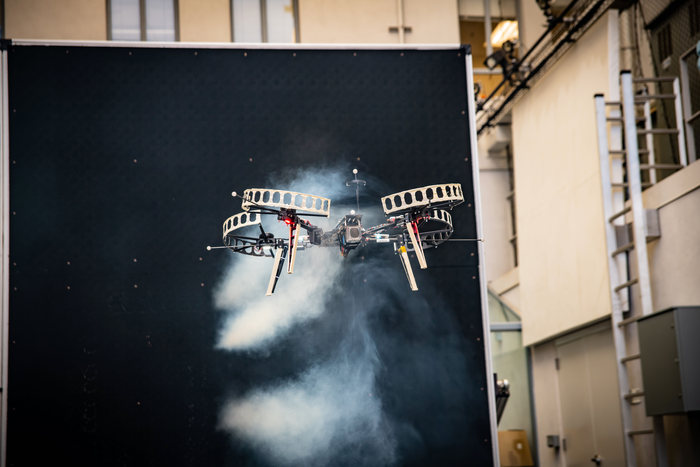Researchers identify how a Chlamydia-produced protein helps bacterial compartments fuse together, thus increasing pathogenicity
PHILADELPHIA – Most people know Chlamydia as the venereal disease that can cause infertility if left untreated. But for researchers studying the causative agent, Chlamydia trachomatis, it’s a bacteria with intriguing properties. Rather than grow and replicate in the blood or other bodily fluids, C. trachomatis get inside cells where they multiply. In most people, this trait keeps the bacterium from being detected by the immune system, and helps the disease fly under the radar; not everyone infected with Chlamydia will show symptoms of the disease. But managing to stay alive inside an infected cell is no small feat for bacteria.
Researchers at Jefferson (Philadelphia University + Thomas Jefferson University) are studying the tricks developed by Chlamydia to survive inside its host cell. C. trachomatis pathogenicity relies on the creation of an intracellular parasitic niche called an “inclusion,” which is made from the outer membrane of the host cell. When a human cell is infected with multiple Chlamydia, each bacterium will develop an individual inclusion, all of which will ultimately fuse together into one large inclusion. This unique fusion event depends on the chlamydial protein IncA. Although it is not yet clear how, researchers know that this bacterial fusion event is linked to Chlamydia’s pathogenicity – its ability to cause disease in the host.
“It appears that when fusion is blocked, we see less disease,” says cellular microbiologist Fabienne Paumet, PhD who was a co-senior author on the research.
Dr. Paumet teamed up with biochemist Gino Cingolani, PhD, at Jefferson an co-senior author, to determine an electron density map of the fusion protein, down to the exact location of atoms, using the time-intensive process of growing crystals out of the protein and zapping them with X-ray radiation in order to capture a reflection, with the exact location and size of the atoms.
Most of the time, cellular biologists like Dr. Paumet get in touch with x-ray crystallographers like Dr. Cingolani at the last stages of their work – to confirm their hypotheses based on biochemical data. This time, however, the Paumet/Cingolani team collaborated early on with the hope that the structure of IncA would provide clues about its function and suggest hypotheses testable experimentally in the laboratory. The crystal structure of lncA helped Dr. Paumet’s team figure out how to create mutations that would test their ideas of how the molecule functioned.
“It’s a collaboration that started a decade ago,” says Dr. Cingolani.
Computational Biologist Juan Perilla, PhD, at the University of Delaware , then joined the team and generated computational simulations of how lncA interacts with itself. In combination with analysis of cells infected with Chlamydia expressing various IncA mutants , the researchers were finally able to find a region of IncA, that they called the ‘clamp,’ which is critical for controlling the fusogenic activity lncA inside infected cells.
Their results were published in Nature Communications on June 18th.
Although membrane-bound compartments of eukaryotic cells fuse all the time, it is very unusual for bacteria to have developed fusion machinery. “Identifying a bacterial protein that helps intracellular parasitic compartments fuse, gives researchers a new tool to probe key disease processes caused by bacteria,” says Dr. Cingolani. “I have colleagues who are just drooling to apply this to their research on mycobacteria, where membrane fusion is key to tuberculosis.”
###
This work was supported in part by NIH grants AI073486, AI144081, P30-GM110758, P50-GM082251. Research in this publication includes work carried out at the Kimmel Cancer Center X-ray Crystallography and Molecular Interaction Shared Resource Facility at Thomas Jefferson University, which is supported in part by NCI Cancer Center Support Grant P30 CA56036 and S10 OD017987. Molecular dynamics simulations were performed on the NCSA Blue Waters supercomputer, supported by the National Science Foundation (ACI-1548562). This work used the Extreme Science and Engineering Discovery Environment (XSEDE), which is supported by National Science Foundation grant number ACI-1548562. The authors report no conflicts of interest.
Article reference: Gino Cingolani, Michael McCauley, Anna Lobley, Alexander J. Bryer, Jordan Wesolowski, Deanna L. Greco, Ravi K. Lokareddy, Erik Ronzone, Juan R. Perilla, Fabienne Paumet, “Structural basis for the homotypic fusion of chlamydial inclusions by the SNARE-like protein IncA,” Nature Communications, DOI: 10.1038/s41467-019-10806-9, 2019.
Media contact: Edyta Zielinska, 215-955-7359, [email protected]
Media Contact
Edyta Zielinska
[email protected]





